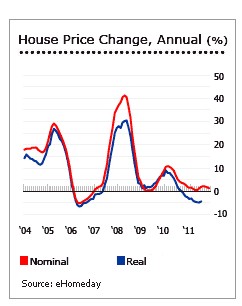At Advanced Cleaners on the corner of Vermont and 29th, price tags have remained unchanged for 8 years for one reason: it serves Trojans, or, USC students. The owner, Hertsel Mofarrah, adorns the storefront as if it were an alumni house. Much of its red counter is covered with snapshots of USC life, and most words left on the photos were addressed to Aunt Ruby, the front desk sweetheart lady who left the job half a year ago when she turned ill.
Ruby’s successor, Urania Blanco, is from El Salvador, the smallest and the most densely populated country in Central America. She rushes out from the rear of the store when the doorbell rings, collects the dirty pieces, and numbers each one of them before putting them in a to-go basket. In the afternoon, Mofarrah comes in and picks up the batch. He sends the clothes to Royal Cleaners on Robertson Boulevard, and drops them off again at his USC cleaner a day later. The shirts and suits have been properly cleaned and pressed. Blanco does a last shave and hangs them in order on a conveyor.
Mofarrah runs both cleaners, but he hasn’t become his own chauffer until the USC business took hit of the recession in 2008. He used to have a line of seven workers at Advanced Cleaners attending to every step of the dry cleaning process. When business turned sour amid the larger economic downturn, the full-fledged crew was reduced to nothing but one receptionist at the counter. He halved the 1,800-square-feet place, leasing the other part out. The machines were also removed. At what later became Mofarrah’s main storefront on Robertson, he had to let go of two people that year to survive the national crisis.
But he says the profit is still shrinking mainly due to a rising cost of labor. Five years into a sluggishly rebounding economy, 70 percent of his business revenue still goes into offsetting expense in climbing wages, chemicals and utility. “The minimum wage has gone up, and my guys don’t settle for the minimum wage because the dry cleaning business relies on trained professionals with rich experience,” says Mofarrah.
He hires five people at Royal Cleaners, where a dry cleaning machine and other amenities are stationed. When a customer brings in a pair of pants for dry cleaning, it goes to the spotter first. The spotter, who gets paid $14 an hour to remove all types of stains using the right chemicals, holds the most lucrative position of all five employees. The tailor has the second fattest paycheck. The whole team has enjoyed raises in the past few years, says Blanco, who worked among them before being transferred to the location near USC.
When Gov. Jerry Brown signed into law the bill that would raise California’s minimum wage to $10 an hour by 2016, it left workers upbeat and small businesses worrisome. While the raise comes in two phases in the next two years, the 25 percent hike would push California to be on top of every other U.S. state in terms of minimum wage and is estimated by the L.A. Times to deliver extra money to around 2.4 million Californians.
For Mofarrah, the USC branch of his laundry business seems self-perpetuating once he bought up the place in 1998. Costs are easily contained now that there is only one employee. And the utility fee is just a tiny fraction of what he pays at Royal Cleaners, where rent has also climbed up by five percent each year. To fulfill a daily task of cleaning 500 pieces, from both storefronts, he now pays a monthly of $1,000 for gas, and another $1,000 for water and electricity. Even the price of plastic bags has doubled from 5 years ago, he says, and the government ridiculously charges him $7 per gallon when its people comes in to collect barrels of chemical waste. The price tag was $2 fifteen years ago.
In response, Mofarrah raised the price for dry cleaning by an average of 50 cents at the end of last year — at Royal Cleaners only. The price for dry-cleaning a pair of pants climbed from $5 to $5.5. But USC students still get the old price of $5, or 50 cents less on discount. “We know it’s hard for students to spend a lot on laundry, so we keep the price low,” the father of a USC Medical School alumnus says.
Mofarrah’s USC business receives about 150 pieces every day, and handles the cleaning of theater costumes and marching band uniforms. But summer strikes him as a truly bleak season for his laundry business because 80 percent of Advanced Cleaners’ customers will be gone. “The students are home, and there is nothing,” he says. Blanco became so bored last summer that she made a pair of crochet stool covers in her free time at work, in red and yellow. They are now part of the store’s USC flair.

